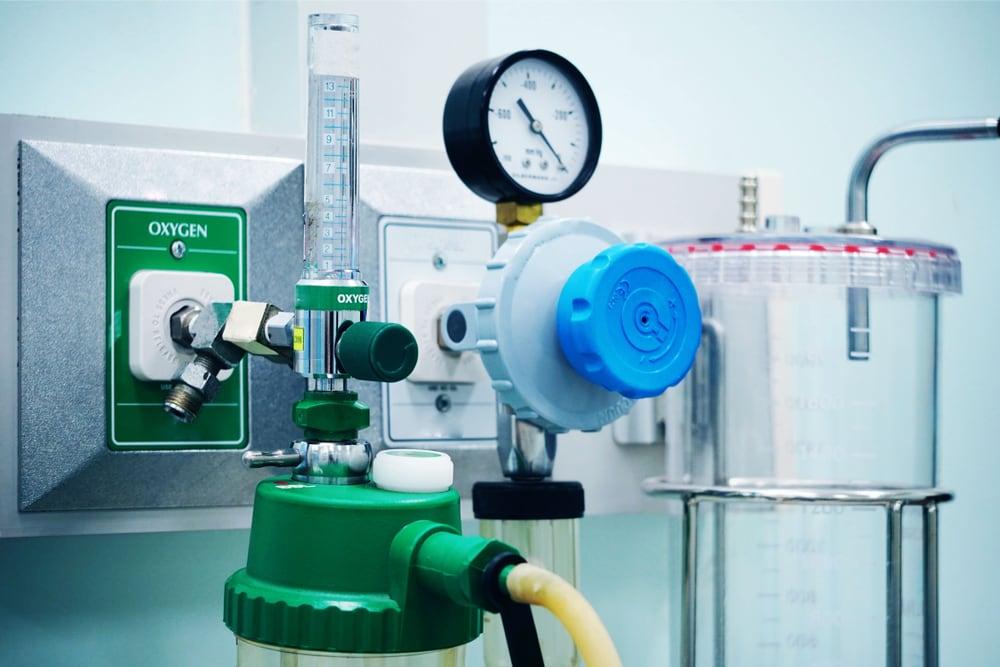
Properly managing anesthetic waste gases is a critical objective in any medical facility that relies on anesthesia delivery. Acute levels of and long-term exposure to anesthetic agents can pose health risks to the people who work in these areas.
However, implementing a waste anesthesia gas disposal (WAGD) system can help keep levels of volatile anesthetics within acceptable ranges. Here’s what you should know.
What Is a Waste Anesthesia Gas Disposal System?
Waste anesthetic gas disposal systems are an anesthetic gas scavenging system (AGSS) that captures volatile anesthetic particles in a room and disposes of those particles safely. There are a few types of WAGD systems but most fall within either an active or passive category.
Active systems utilize vacuums, fans or specific elements to generate pressure. This pressure pushes the volatile compounds into a collection unit. By contrast, a passive system utilizes a large tube to diffuse the compounds to the facility's ventilation system or another collection system.
A WAGD system can be either active or passive, but all systems have four primary parts, including:
- A relief valve that leads gas out of the breathing circuit
- Conducting tubing
- Receiving elements
- Disposal elements
The Importance of WAGD Systems
While steps are taken to ensure anesthetic compounds are not leaked into the environment, some fugitive gases may still escape the respiratory systems connected to the patient. In fact, as much as 90% of anesthetic agents are expelled from the patient's body in the same state as when administered. For example, nitrous oxide doesn't change significantly while in the body. Therefore, it leaves the respiratory system mostly unchanged.
The risks associated with workplace exposure to volatile anesthetic agents are clear. Personnel can be affected by the gases, some of which are known to be linked to serious illness. Health care professionals consistently exposed to anesthesic agents may be at risk of certain cancers, decreased fertility and compromised peripheral nervous systems. Even acute exposure is not without risks; acute exposure to nitrous oxide can cause depressed motor skills, lightheadedness and nausea.
The gas waste disposal systems can help keep the levels of anesthetic compounds in the room at an acceptable level. The most recent recommendations set forth by the National Institute for Occupational Safety and Health (NIOSH) are to keep exposure to halogenated agents at 2 ppm and nitrous oxide at 25 ppm. If mixed agents are in use, the recommended limit is 0.5 ppm. Therefore, exposure levels must be accurately monitored, and the proper systems should be in place to maintain safety in health care treatment settings.
Maintenance Requirements
These gas waste disposal systems are valuable; as such, they require some ongoing maintenance for proper functionality and safety. Active systems that have a vacuum chamber can collect an abundance of gas. Sometimes, gases can collect in the chamber that should not be combined due to negative interactions. With proper maintenance, these combinations can be avoided.
Additionally, peak operational efficiency is reliant on routine maintenance and assessing the system for potential gas leaks. Therefore, any facility that does have one of these disposal systems in place should work carefully with the servicer to ensure proper upkeep is followed.
Get Experienced Help With Your Medical Gas Systems
Evergreen Medical Services offers services for medical gas systems. We also provide environmental monitoring services for health care facilities and can help you maintain the most effective gas delivery equipment. Our medical gas training courses ensure that your facilities are equipped with the knowledge to safely use these systems.
Contact Evergreen Medical Services to find out more about our services, equipment and available educational courses.
Sources:
https://www.ncbi.nlm.nih.gov/books/NBK544254/
https://pubmed.ncbi.nlm.nih.gov/29104694/
https://www.ncbi.nlm.nih.gov/books/NBK544254/
https://pubmed.ncbi.nlm.nih.gov/29104694/
https://www.ncbi.nlm.nih.gov/books/NBK544254/
